Axolotls, often dubbed “the walking fish,” are fascinating amphibians that seem to belong to a different realm entirely. With their feathery external gills, perpetual smiles, and regenerative abilities, these unique creatures captivate wildlife enthusiasts, researchers, and educators alike.
Whether you’re an eco-tourist or a conservationist, this comprehensive guide will delve into everything you need to know about axolotls, from their biology to their conservation status.
What Is an Axolotl?
Axolotls (Ambystoma mexicanum) are a species of neotenic salamander native to the lakes underlying Mexico City, particularly Lake Xochimilco. Unlike most amphibians, they retain their aquatic features throughout their lives, giving them an otherworldly appearance.
Key Characteristics of Axolotls
- Neoteny: Axolotls remain in their larval stage indefinitely, retaining gills and an aquatic lifestyle.
- Regeneration: They can regrow limbs, spinal cords, and even parts of their heart and brain.
- Unique Appearance: Their external gills and wide, grinning faces make them stand out.
Habitat and Natural Environment
Native Habitat
Axolotls are endemic to the ancient lake systems of Mexico, primarily found in:
- Lake Xochimilco: A UNESCO World Heritage Site, home to the last remaining wild axolotl populations.
- Lake Chalco: Previously a key habitat, now drained for urban development.
Threats to Their Habitat
- Urbanization: Expansion of Mexico City threatens their ecosystem.
- Pollution: Industrial and agricultural runoff has led to water contamination.
- Invasive Species: Introduced fish species prey on axolotl eggs and larvae.
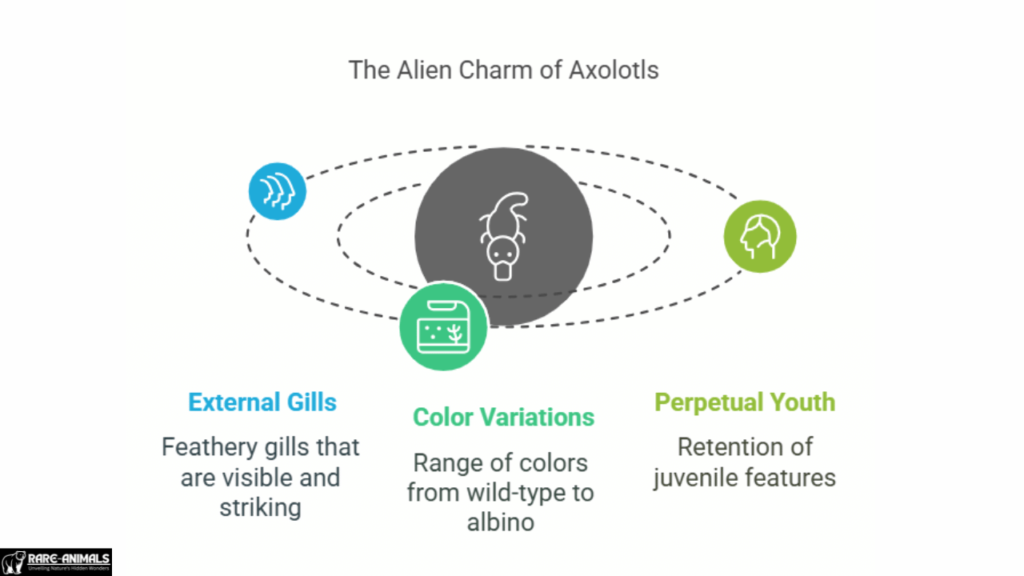
Why Do Axolotls Look So Alien?
Axolotls have an appearance that intrigues and fascinates many due to their unique features:
- External Gills: Unlike other salamanders, their feathery gills are visible and striking.
- Color Variations: From wild-type brown to albino and leucistic, axolotls exhibit a range of colors.
- Perpetual Youth: They maintain their juvenile features, which adds to their alien-like charm.
Conservation Efforts and Challenges
Axolotls are critically endangered in the wild due to various environmental and human factors. Conservationists and researchers are working tirelessly to prevent their extinction.
Conservation Strategies
- Habitat Restoration: Efforts to clean and restore Lake Xochimilco.
- Captive Breeding Programs: Managed breeding to maintain genetic diversity.
- Public Awareness Campaigns: Educating the public on axolotl conservation.
Axolotls in Captivity
Due to their declining numbers in the wild, axolotls are often bred in captivity. They have become popular pets worldwide.
Care Requirements
- Tank Size: A minimum of 20 gallons per axolotl.
- Water Conditions: Cool, clean, and well-filtered water with a pH between 6.5-7.5.
- Diet: Worms, pellets, and small fish provide essential nutrients.
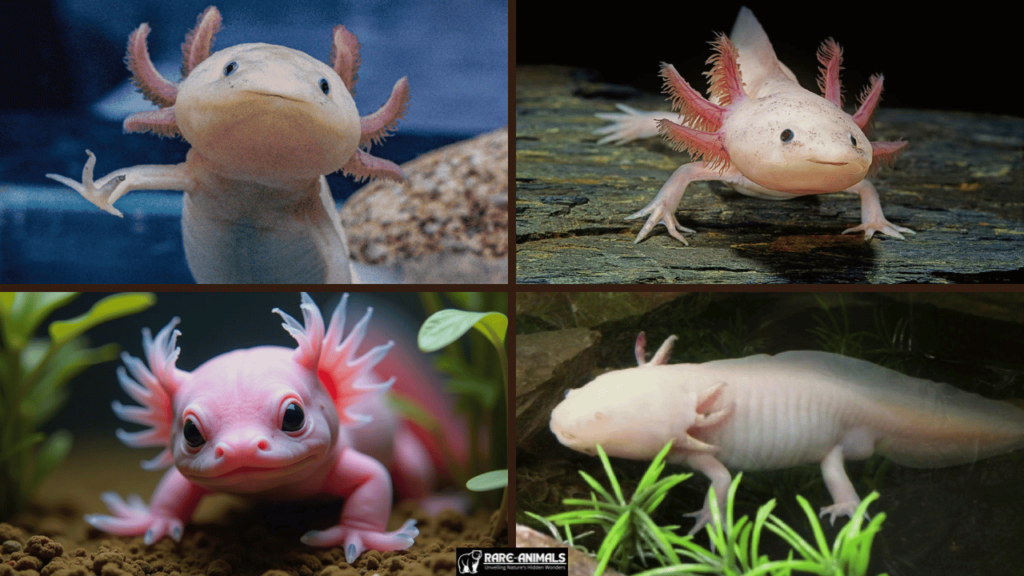
Common Health Issues
- Fungal Infections: Resulting from poor water quality.
- Impaction: Caused by swallowing gravel or large food particles.
- Temperature Stress: High temperatures can be fatal to axolotls.
Axolotl Regeneration: A Scientific Marvel
One of the most fascinating aspects of axolotls is their ability to regenerate complex body parts. Scientists are studying these capabilities to unlock medical breakthroughs in human tissue regeneration.
How Regeneration Works
- Cellular Reprogramming: Axolotls revert cells to a stem-cell-like state.
- Tissue Reconstruction: Regrowth occurs without scarring.
- Potential Applications: Insights into wound healing and organ regeneration in humans.
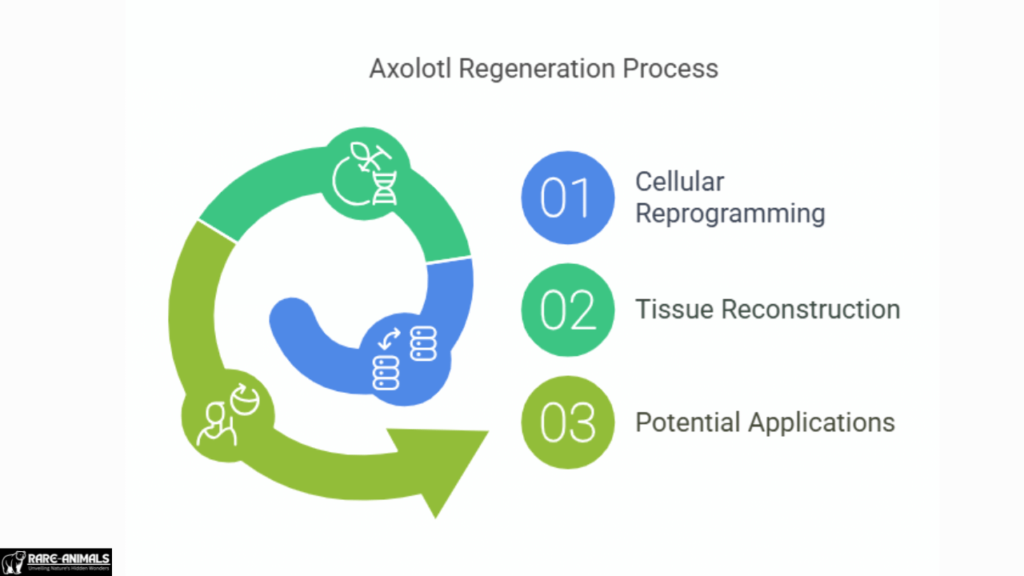
Fun Facts About Axolotls
- They can regenerate up to five times without scarring.
- Axolotls were revered by the ancient Aztecs as a deity symbolizing transformation.
- They are often referred to as “water monsters” due to their mythical appearance.
FAQs
Q1: Can axolotls live on land?
A: No, axolotls are fully aquatic and require water to survive.
Q2: How long do axolotls live?
A: In captivity, they can live up to 15 years with proper care.
Q3: Are axolotls legal to own as pets?
A: It depends on the region; some areas have restrictions to protect native ecosystems.
Q4: What do axolotls eat?
A: They primarily consume worms, brine shrimp, and protein-rich pellets.
Q5: Why are axolotls endangered?
A: Habitat destruction, pollution, and invasive species have severely impacted wild populations.
Conclusion
Axolotls are truly extraordinary creatures, blending biological wonder with environmental significance. Their unique characteristics, from their alien-like appearance to their remarkable regenerative abilities, make them a species worth preserving.
Whether you’re considering an axolotl as a pet or looking to support conservation efforts, every action counts.
Ready to learn more or get involved? Share this article with fellow wildlife enthusiasts and contribute to axolotl conservation today!

Alveena is an experienced content writer with a knack for crafting engaging and insightful pieces. She thrives on breaking down complex ideas and presenting them as clear, captivating content that resonates with readers.

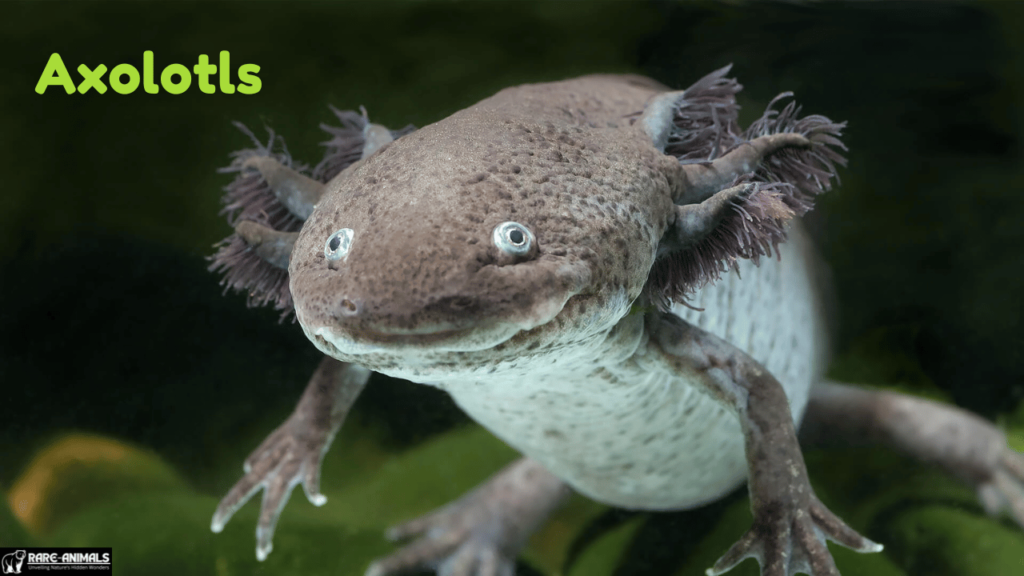



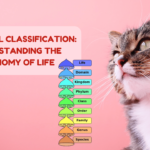


1 thought on “Axolotls: Why These Salamanders Look Like Creatures From Another World”